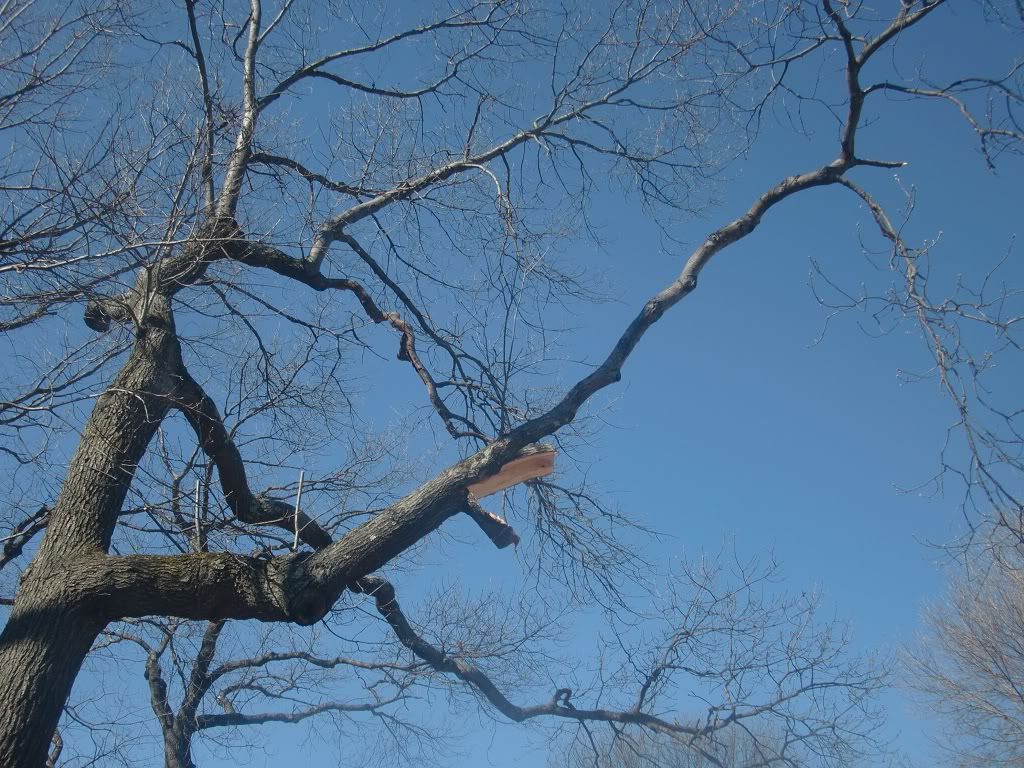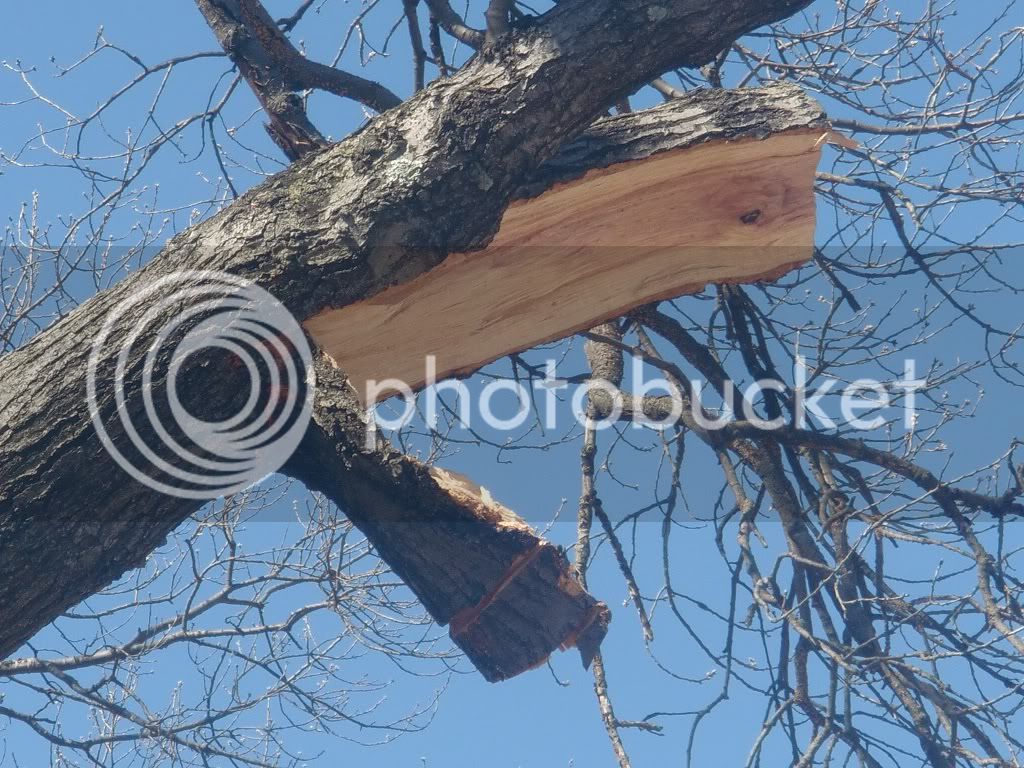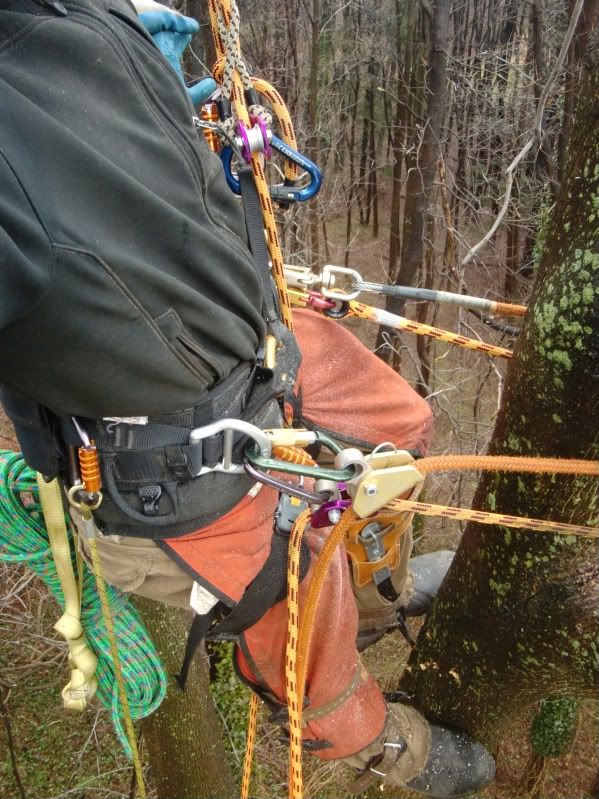treemandan
Tree Freak
The bottom line here is never have your lanyard around a large horizontal piece you are cutting. #### just happens sometimes and when it does you are much better off if your life support is elsewhere. Even if you had to perch on a limb with overhead support and were to take a swing if you lost your balance you'd be better off than being a part of what went wrong. Don't overlook the fact that often a ground worker can hold the tail of the climber's rope keeping it out of the drop zone and at the same time aid in positioning and minimizing climber swing if it comes down to it. Sometimes when 'bombing out' lots of big wood I'll have the tail of my climbing line in a rope bag on my hip just so I can stay entirely above the 'happenings'.
Is that a rule? I didn't know. Personally I feel comfortable strapping in to a limb like that and letting her rip... I mean jump... or whatever. Its a bit of work getting a good undercut in but by the time its done I have good results.
Also, if you have a solid tip then you can wrap the lanyard around a little sucker or twig to help keep you in good postion. You do have to be in good postion to set a good undercut on a limb like that without getting the saw stuck. Every once in a while I get it stuck, I just get another 20.
The one time I got squuzed was from a mishap on a pole. And Yeah, it would have ripped my scrawny ass in half if the cards weren't played as they were. It hurt a little and it actually compacted the turds in my intestines.
Now the jump and snap are not the same cut. Perhaps you could post a good example pic TreeCo? Your good at that kind of stuff.
I will try to explain:
the snap is best used on verticle poles. You make a shallow face cut, don't go deeper than the bar. The backcut is above the face cut and when it starts to close jam a piece of bark in there to hold it open and continue to cut ( but not all the way through) until you know you can put the saw down and snap the thing off easily and drop it where you want it. No need to to hold it with your hand as you cut, keep them both on the saw.
The jump is best for horizontal limbs, you make the deepest facecut you can without sticking the bar. You can widen the kerf of the facecut as you cut deeper into it. You have to be fast getting the saw out, you have to have complete control. Doing it with a 20 you can use one hand without fear of harm. Same with the backcut BUT position is everything. Once the facecut is set the backcut is made a few inches below/behind the facecut. You don't want to have yer face to close when it goes off. Done right the limb will jump like a fish upwards then the butt will fall like stone.
These two cuts used at the proper time and done right will eliminate getting yer #### packed in... and that is something no man wants to admit have happen.:msp_crying:
Last edited:




























































